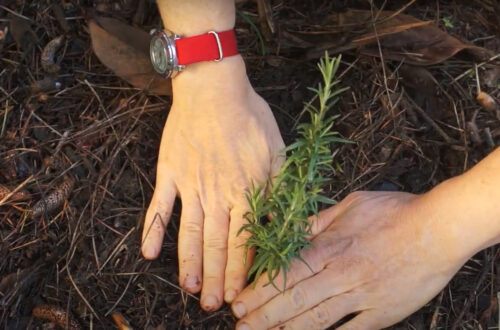
Tree Guild and Wildflowers
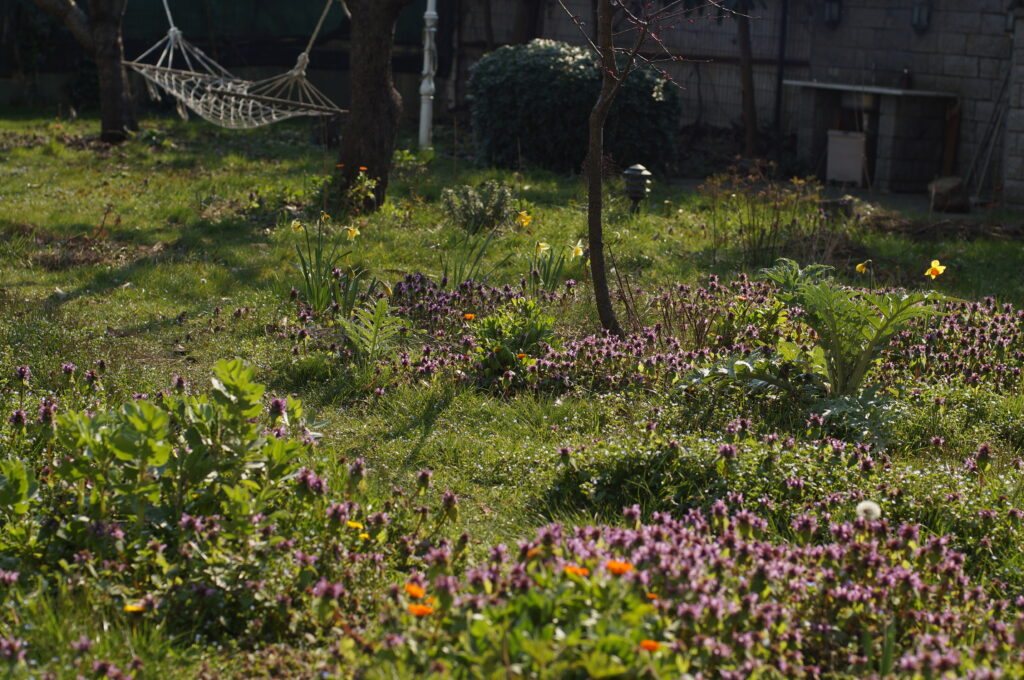
Making a Tree Guild
For the past year I’ve been working on turning our family house’s lawn garden into a self sustained permaculture garden. The physical work and energy that goes into tending lawn is incredible. In addition it needs a lot of water to keep it green all the time!
It’s hard work to get rid of lawn at once. So I started making circles around the fruit trees and planting perennials.
1.COMFREY
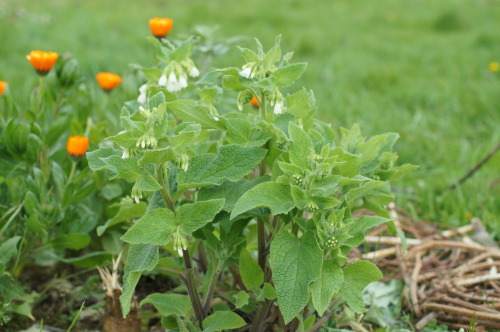
I heard about the benefits of comfrey a lot while reading about permaculture,but there was no way I can find it here. While I was walking around I found a native comfrey which is Symphytum orientalis. The only difference from the officinale one is that this one has white flowers and has no medicinal uses. I uprooted a couple of them from the sidewalk and planted them around the trees. Now and then I tear the leaves to make a mulch full of minerals. Also when they flower in April bees love them!
2. ARTICHOKE
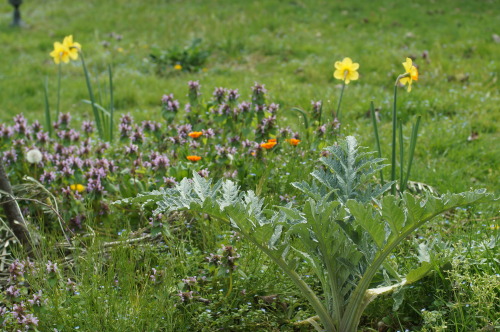
While I was living in Ayvalık right across Mitilini, I got very familiar with artichokes as they were grown so much around the area.
They are a living mulch with their large leaves that keep the soil moist and a wonderfully beneficial vegetable. They give out suckers (in Turkish they’re called bastards) which can be planted elsewhere in the garden.Once you have 1 plant you can have many more!
3.DAFFODILS
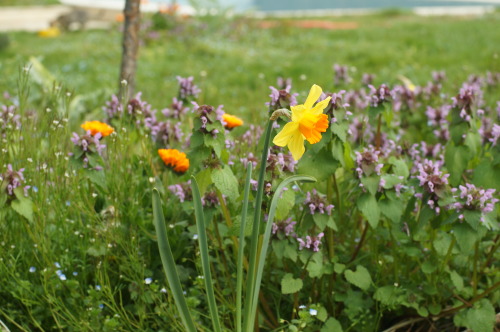
Daffodils are flowers that are grown from bulbs. They hold moisture and prevent nutrients from washing away with rains . Then they go to sleep in summer months and don’t steal any of the tree’s precious water!
I planted some bulbs in February. It took a little while to see the shoots and I had to protect them from our jumping kittens! They made it through and bloomed so wonderfully! They cheered up me and the bees in the gloomy cold days.
4.CALENDULA
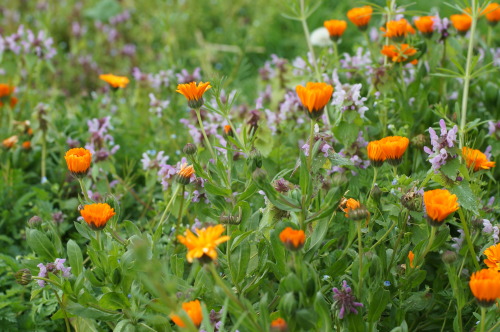
Another of my favorite plants! It attracts beneficial insects and deters pests. It’s a self seeding plant and new seedlings come up all the time. So I just move the seedlings wherever I want. The best part is that they bloom nearly all year long!
5.WILDFLOWERS
Once I cultivated the soil underneath the trees, all kinds of native flowers came up. They’re bees’ favorites, add color and joy to otherwise boring lawn, some of them are ground covers that spread prolifically and they need no special attention: they can take care of themselves!
Lamium Purpureum (dead nettle)
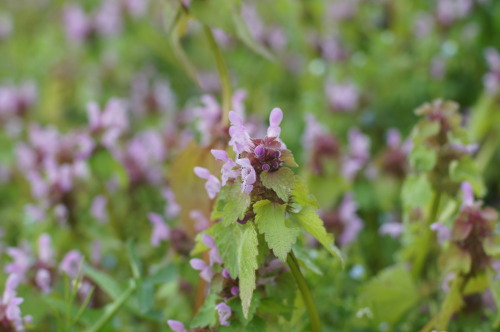
Dead nettle is the star of the wildflowers! It’s everywhere and I’m so joyful to see all kinds of bees -especially bumblebees- buzzing around in cold March days. It’s an edible plant with lots of healing properties. I like to toss them into salads!
Cardamine hirsuta (Bittercress)
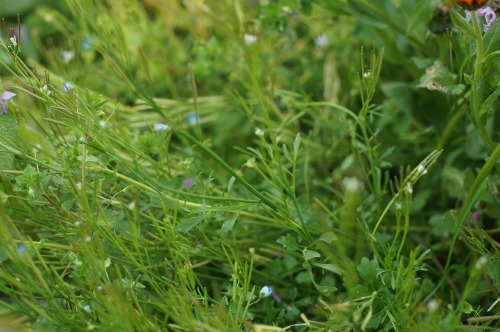
With its curly little leaves and tiny white flowers it was growing all around! It’s edible and very pretty. It has a funny way of dispersing its seeds. Once the seedpods are dry, as soon as you touch them the seeds fly all over the place! At first I thought they were tiny little insects that were jumping around,but no! They were the jumping seeds!
Veronica persica (speedwell)
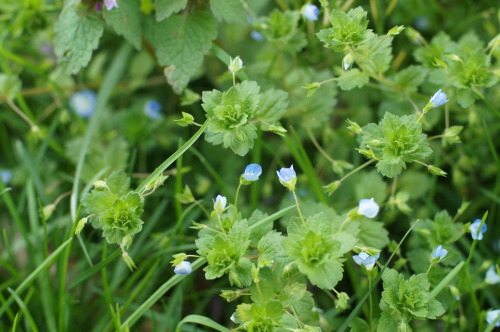
It almost took over the lawn.It’s a creeping plant,a great ground cover and has tiny blue flowers which bees love! I just learned from juliasedibleweeds.com that Gypsies use this plant as a blood purifier. It also heals eyesores,removes excess mucus,soothes internal tissues,treats asthma,coughs..wow!
St.John’s Wort (hypericum perforatum )

I see it here and there and I keep it in protection. It’s one of my favorite plants! I use its flowers for making an infused oil that I use for making salves. It heals burns and scrapes with incredible speed,like magic! Also an infused tea made of its flowers is an anti-depressant.It cheers you up without even noticing it!
When it’s not flowering it develops roots and gives out shoots all round, which makes it a great ground cover.
Muscari armeniacum (grape hyacinth)
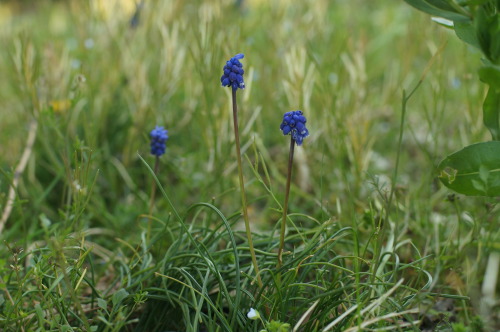
In winter I noticed dark green allium like shoots coming up around the borders of the garden and I let them grow to see what will come out of them. At the end of March small flowers came up and there it was: grape hyacinth! It’s such a delicate flower and YES it was also a native plant!
It’s wonderful to see how many beautiful and beneficial plants lay underneath the boring lawn!



